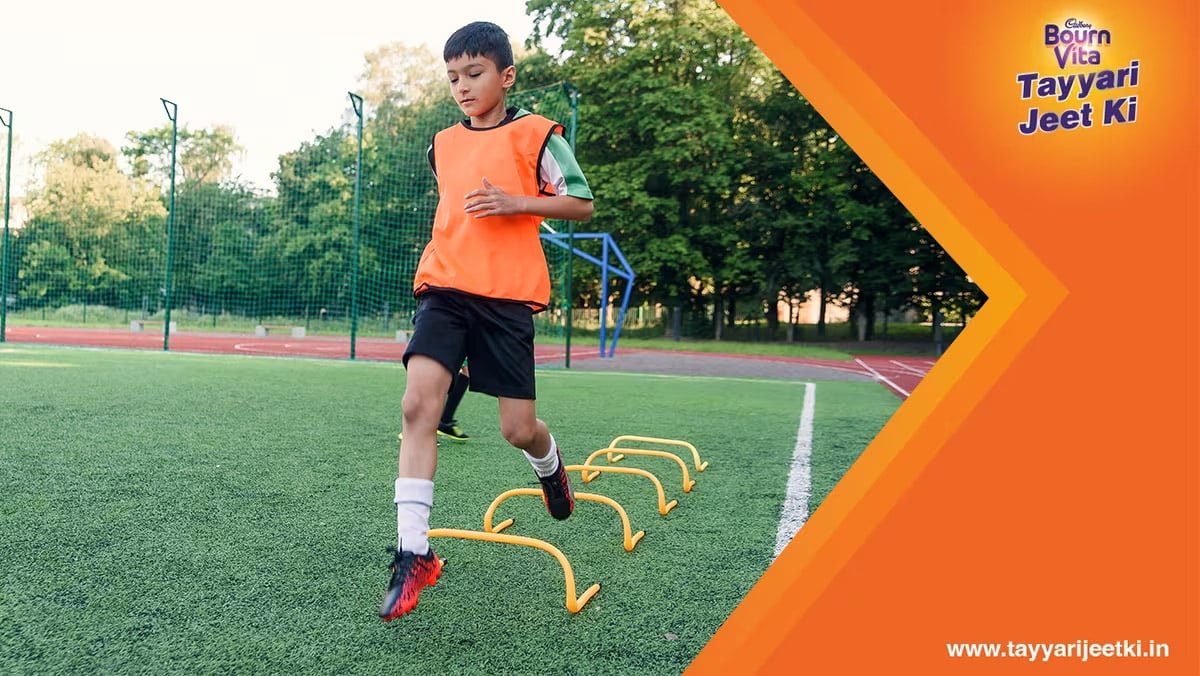- Calcium and Vitamin D
- Physical Activity
- BMI and Obesity
Childhood is the most dynamic period in a person's life, characterised by intense bone growth and development. Through the processes of modeling and remodeling, bones acquire their adult proportions, culminating in peak bone mass (PBM). This PBM serves as a reserve from which individuals draw bony strength for the rest of adulthood and beyond.
Optimisation of this peak bone mass requires optimum interaction of genetic, environmental (physical activity), dietary, and hormonal factors (Source). While factors like acute illnesses, chronic diseases, and certain medications can impact peak bone mass, the focus here is on the well-being of typical, healthy children.
 To check how good your child’s Vitamin D intake level is, use the Nutricheck App on the Tayyari Jeet Ki website
To check how good your child’s Vitamin D intake level is, use the Nutricheck App on the Tayyari Jeet Ki website
With an increasing number of children presenting complaints of tiredness, difficulty climbing stairs, backaches, calf pain, and joint pains related to weight-bearing, the inability to carry out age-appropriate outdoor games, and other activities brings attention to reduced and further dwindling skeletal strength. The article will delve into modifiable risk factors responsible for this erosion of strength.
Identifying Modifiable Risk Factors
1. Calcium and Vitamin D
Calcium is crucial for bone mass, while Vitamin D facilitates its efficient absorption. Vitamin D also ensures the right levels of calcium and phosphorus in the body, optimising the buildup of bone minerals. Due to the lack of adequate sun exposure, increasing time indoors, and inadequate dietary sources, Vitamin D deficiency is becoming common in children (Source). Insufficient Vitamin D, known as hypovitaminosis D, disrupts calcium balance, undermining peak bone mass. Early signs of Vitamin D deficiency should be addressed at the earliest.
2. Physical Activity
Studies have shown that consistently intense physical activity leads to higher hip strength and reduces future chances of osteoporosis in later life (Source). In today's sedentary culture, children often lack physical activity. To enhance Peak Bone Mass (PBM) and prevent strength decline, it's crucial to promote outdoor activities. According to the Indian Academy of Pediatrics, children should engage in 3 hours of structured physical activity every day (Source).
3. BMI and Obesity
Although the body mass index (BMI) within a healthy range is associated with positive bone mineral density, studies reveal that childhood obesity correlates with a higher incidence of fractures, indicating a potential role in weakening bone strength (Source). This highlights the importance of promoting physical activity, reducing junk food consumption, and maintaining a consistent sleep schedule.
Conclusion
The years from 6 to 12 are crucial for building strong bones in your child - like a bone bank for life. But, some lifestyle choices and nutrition during these years can weaken bone strength. Knowing about strength erosion means being aware of things we can change to prevent the loss of this crucial bone bank in the younger generation.
To check how good your child’s Vitamin D intake level is, use the Nutricheck App on the Tayyari Jeet Ki website. Click here https://www.tayyarijeetki.in/nutricheck/ to get started.
The views expressed are that of the expert alone.
The information provided in this content is for informational purposes only and should not be considered a substitute for professional medical advice, diagnosis, or treatment. Always seek the advice of your physician or another qualified healthcare provider before making any significant changes to your diet, exercise, or medication routines.










